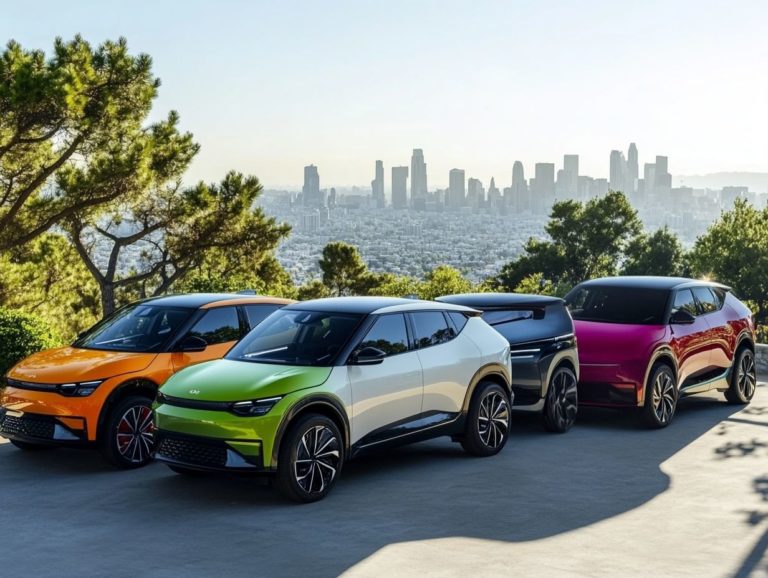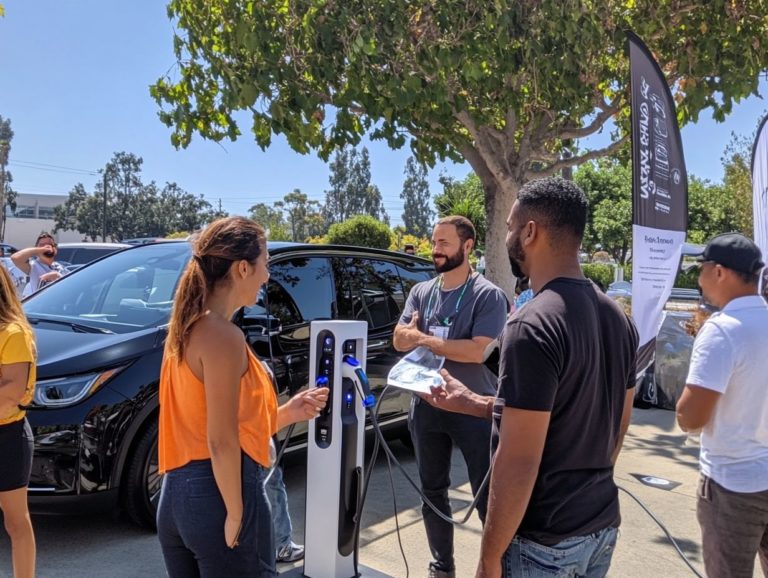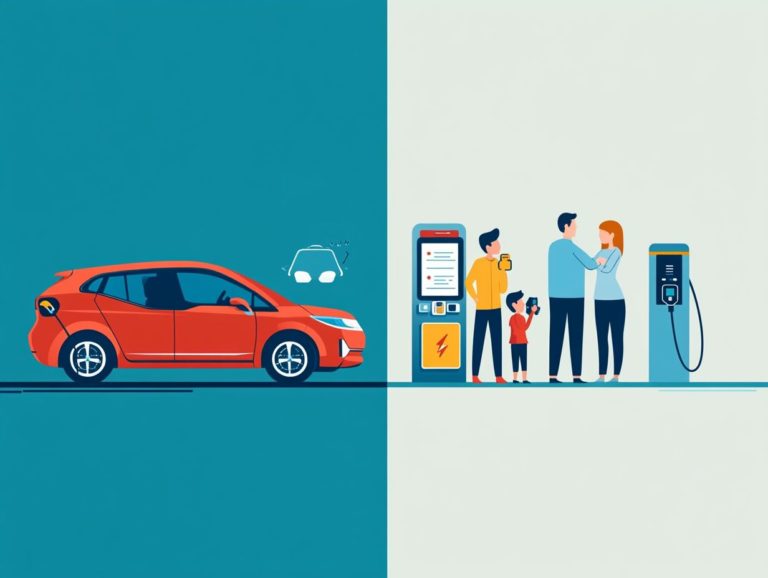understanding electric vehicle range: a buyer’s guide
Electric vehicle (EV) range is an essential consideration for anyone contemplating the switch to electric. It defines how far you can travel on a single charge, greatly affecting your driving experience and convenience.
This guide reveals exciting factors that shape your EV experience! You’ll discover practical tips for maximizing your EV’s range and a comparison of various models to help you make an informed decision.
Whether you’re an experienced EV owner or just beginning your journey, this article provides insights needed to navigate the intricate world of electric vehicle range.
Contents
- Key Takeaways:
- What is Electric Vehicle Range?
- What Influences Your EV’s Range?
- How to Calculate and Estimate Range
- Maximizing Electric Vehicle Range
- Comparing Range Among Different Electric Vehicles
- Frequently Asked Questions
- What is the range of an electric vehicle?
- How is the range of an electric vehicle determined?
- What is the average range for an electric vehicle?
- Can the range of an electric vehicle change over time?
- How can I maximize the range of my electric vehicle?
- Are there ways to extend the range of an electric vehicle?
Key Takeaways:
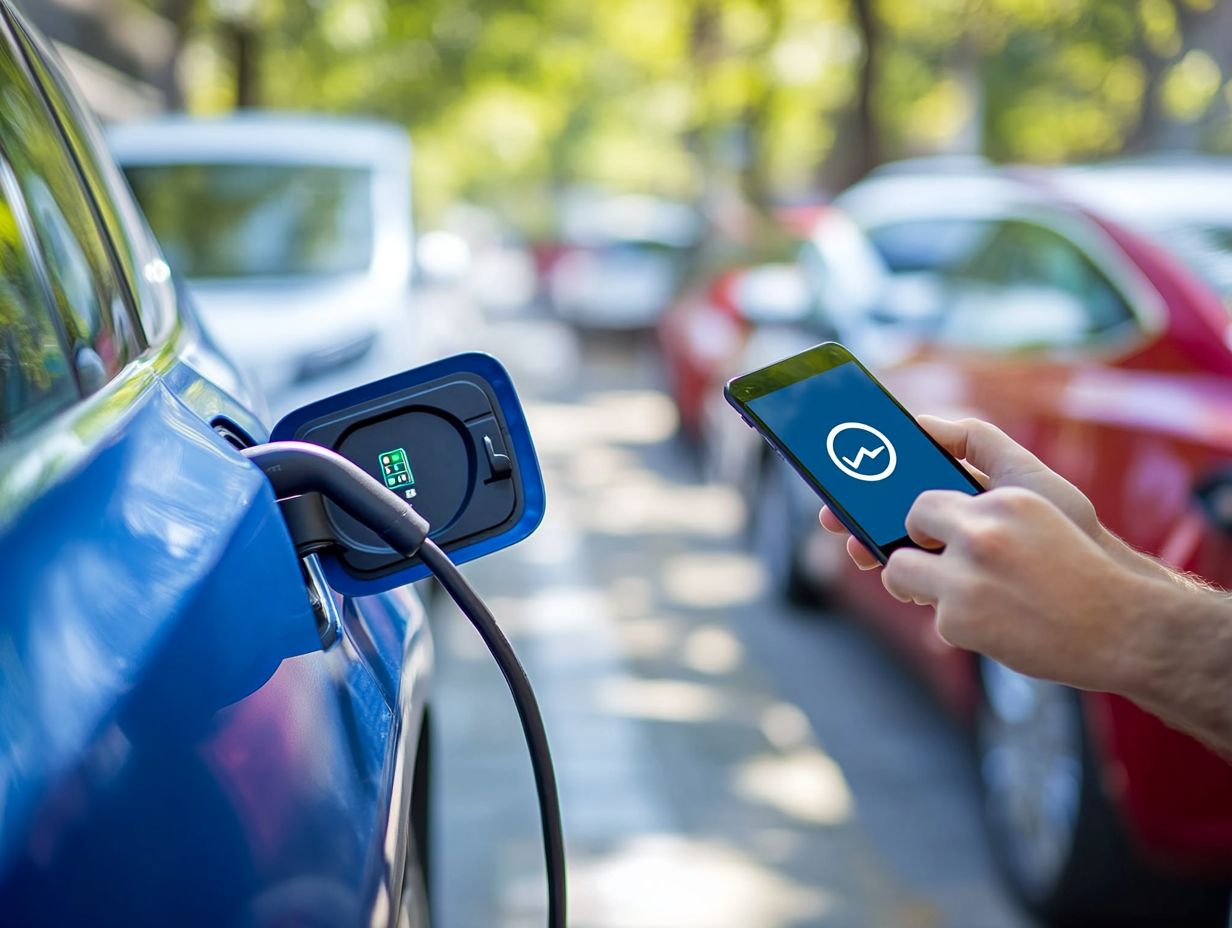
Understanding electric vehicle range is crucial for making an informed purchase. Factors such as battery capacity, driving habits, and climate greatly affect range. To maximize range, consider using EPA ratings, implementing efficient driving habits, and comparing ranges among different electric vehicles.
What is Electric Vehicle Range?
Electric vehicle range denotes the distance an electric car can cover on a single charge. This is a crucial consideration that influences consumer choices in the expanding market of battery electric vehicles (BEVs) and hybrid electric vehicles (HEVs).
Several factors, such as battery type and efficiency, can significantly impact this range. It’s vital for potential buyers to grasp how these variables shape their overall EV experience.
As electric vehicle adoption continues to rise, understanding range will help you assess the costs and running expenses associated with electric cars more accurately.
What Influences Your EV’s Range?
Several factors significantly influence the range of your electric vehicle. These include battery type, your driving habits, and external conditions like climate and terrain.
Each of these elements affects how far you can travel on a single charge and the overall efficiency of your vehicle. Being aware of these factors is essential to enhance your driving experience, minimize running costs, and make informed choices, whether you’re considering a used electric vehicle or exploring new models.
Battery Capacity and Type
The type and capacity of a battery play an important role in determining the range of electric vehicles. They directly impact the amount of energy stored and how effectively that energy is used in battery electric vehicles (BEVs).
For example, the Tesla Model 3 is equipped with a standard lithium-ion battery that offers an impressive range of up to 358 miles on a single charge. This underscores the importance of opting for high-capacity batteries.
In contrast, the Nissan Leaf, which focuses on accessibility, comes with a smaller battery option, limiting its maximum range to about 226 miles.
Various companies, including Toyota and Samsung, are exploring the advantages of emerging solid-state batteries, known for their higher energy densities and quicker charging capabilities. As consumer demand for longer ranges escalates, the differences in battery types and their capacities will play a critical role in shaping purchasing decisions.
Ready to choose your electric vehicle? Start comparing models today!
Driving Habits and Conditions

Your driving habits and conditions play a big role in how far your electric vehicle can go. Aggressive acceleration, frequent stops, and high speeds can increase energy use, lowering your travel distance on a single charge.
You can improve your EV’s efficiency by using techniques like regenerative braking, which captures energy while braking to recharge the battery.
Understanding different driving styles is key to maximizing your range. City driving often involves stop-and-go traffic, which quickly drains power due to constant acceleration and braking.
In contrast, highway driving allows for a steady speed, helping your vehicle use its battery more efficiently. To boost efficiency, adopt smoother acceleration, anticipate stops, and reduce speed when possible.
Using regenerative braking while going downhill or slowing down conserves energy and extends your vehicle s range. These strategies are essential for enhancing your electric vehicle experience.
Climate and Temperature
Climate and temperature significantly influence the range of your electric vehicle. Extreme weather can affect battery performance and energy consumption, often leading to reduced efficiency and slower charging at stations.
Cold temperatures can greatly impact battery life and range. Therefore, it s crucial to consider your local climate when evaluating your vehicle options.
In hotter climates, excessive heat can degrade the battery, reducing overall performance and longevity. This challenge has prompted manufacturers to invest in advanced thermal management systems to keep batteries at optimal temperatures.
To promote climate-friendly practices, various government grants and incentives are being introduced. These programs encourage consumers to adopt electric vehicles, regardless of local weather conditions.
By enabling manufacturers to innovate and offering financial support for sustainable purchases, these initiatives contribute to a robust infrastructure for electric mobility that thrives across diverse climates.
How to Calculate and Estimate Range
Calculating the electric vehicle range is a blend of EPA ratings and real-world data, helping you make informed decisions about your purchase.
As you navigate EV costs and efficiency, understanding how to use these metrics allows you to assess the potential range of various electric cars.
This knowledge helps you choose a model that truly matches your driving needs and lifestyle.
Using EPA Ratings and Real-World Data
Utilizing EPA ratings alongside real-world data is crucial for accurately assessing the range of electric vehicles. EPA ratings offer standardized metrics reflecting a vehicle s efficiency under controlled conditions, while real-world data provides insights into everyday driving scenarios.
The journey to determine EPA ratings starts with rigorous lab testing, where factors like acceleration and braking are controlled to paint a comprehensive picture of efficiency. However, experts note that these environments might not capture the nuances between city and highway driving, leading to potential discrepancies.
For example, while a specific model may have an EPA rating of 250 miles on a single charge, user experiences often average around 200 miles, especially in colder climates where battery performance suffers.
These insights emphasize the importance of considering both EPA ratings and real-world data when evaluating electric vehicles.
Maximizing Electric Vehicle Range
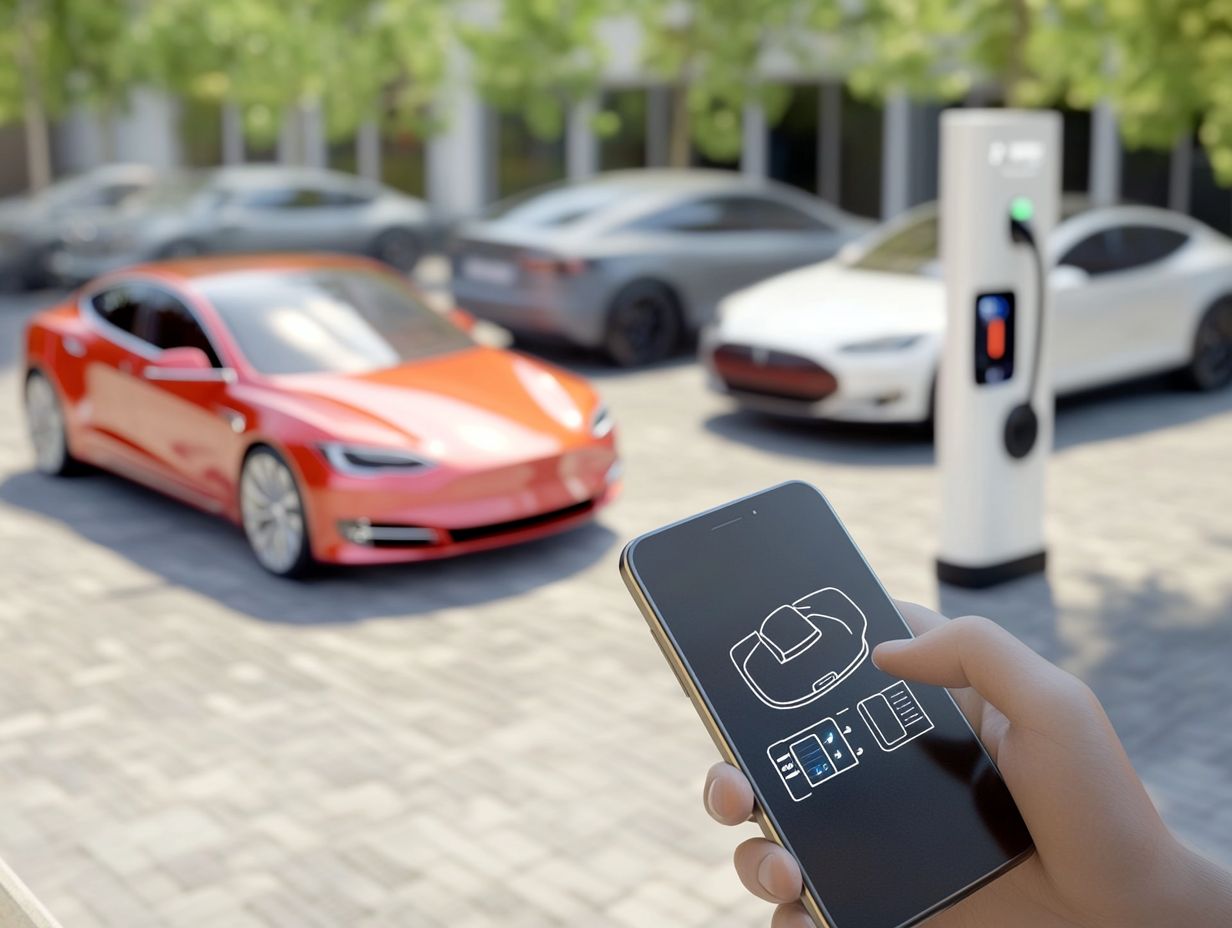
Maximizing the range of your electric vehicle requires a thoughtful blend of strategic driving practices, efficient charging methods, and a keen understanding of your vehicle’s technology.
This approach not only reduces your overall running costs but also makes driving more enjoyable.
By embracing effective techniques, you can extend your vehicle’s range, ensuring you truly capitalize on your investment in sustainable transportation.
Tips and Tricks for Extending Range
Implementing effective tips and tricks to extend your electric vehicle’s range can significantly elevate its performance and efficiency, allowing you to maximize your driving experience.
Simple adjustments to your driving habits can lead to longer journeys and reduced energy consumption. By adopting smoother driving techniques, like gentle acceleration and deceleration, you can minimize energy drain and enhance your range.
Regularly checking your tire pressure and battery health is crucial for achieving optimal functionality. Maintaining proper tire pressure can lead to improved efficiency.
Strategically utilizing charging stations such as planning longer trips around available fast chargers can further expand your travel capabilities. Emphasizing these maintenance routines extends your vehicle s lifespan and ensures it operates at peak efficiency over time.
Comparing Range Among Different Electric Vehicles
When considering your options in today s electric vehicle market, comparing the range among various models is essential. Each vehicle presents unique performance metrics and price points, spanning from budget-friendly used electric cars to high-end offerings like Tesla and Audi.
This comparison helps you make a smart investment choice! It sheds light on how different manufacturers strike a balance between range and pricing in their EVs.
Range Comparison Chart
The range comparison chart elegantly presents various electric vehicles, providing you with valuable insights into their range capabilities. This information is crucial for making informed decisions about your purchases and investments.
By examining the range, you can pinpoint which models align perfectly with your daily commuting needs or long-distance travel aspirations. The chart also highlights key price points, enabling you to compare affordability while grasping the unique features that distinguish each vehicle, such as battery life, charging speed, and technological advancements.
This comprehensive overview not only streamlines your decision-making process but also enables you to weigh the benefits and drawbacks of each option, ultimately leading to a more fulfilling ownership experience.
Frequently Asked Questions
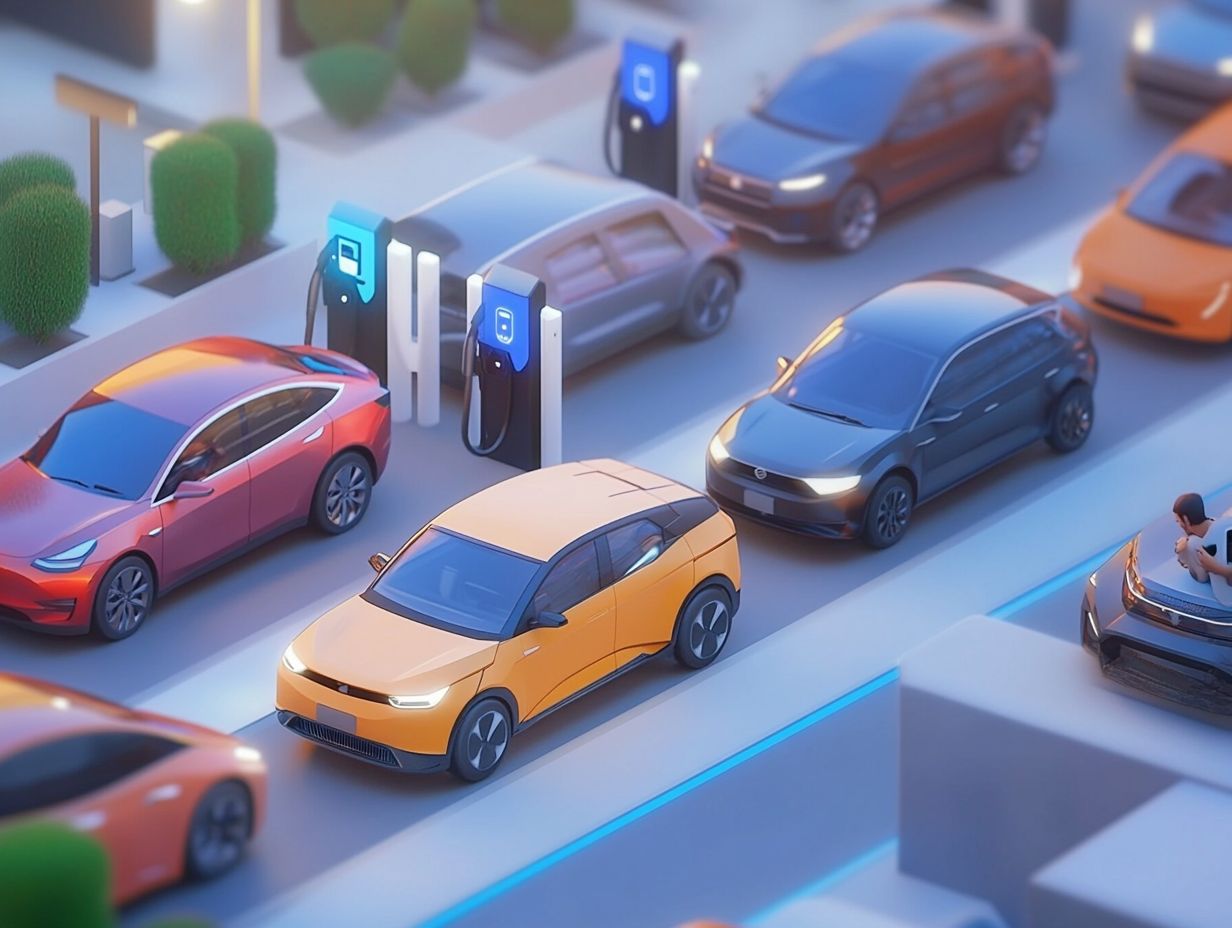
What is the range of an electric vehicle?
The range of an electric vehicle refers to the distance the vehicle can travel on a single charge before needing to be recharged.
How is the range of an electric vehicle determined?
The range of an electric vehicle is determined by several factors, including the size and capacity of the vehicle’s battery, its energy efficiency, and driving conditions such as speed and terrain.
What is the average range for an electric vehicle?
The average range for an electric vehicle is typically between 100 and 250 miles on a single charge. However, this can vary greatly depending on the make and model of the vehicle.
Can the range of an electric vehicle change over time?
Yes, the range of an electric vehicle can change over time. Factors such as battery degradation, weather conditions, and driving habits can all affect the range of an electric vehicle.
How can I maximize the range of my electric vehicle?
To maximize the range of your electric vehicle, you can use regenerative braking, avoid excessive speeds, and plan your routes to include charging stations. Keeping your tires properly inflated and limiting the use of heating and air conditioning can also help improve range.
Start implementing these tips today to maximize your electric vehicle’s range!
Are there ways to extend the range of an electric vehicle?
Yes, you can extend the range of an electric vehicle! Some models come with larger batteries.
Exciting advancements in battery technology could also boost the range in the future.

